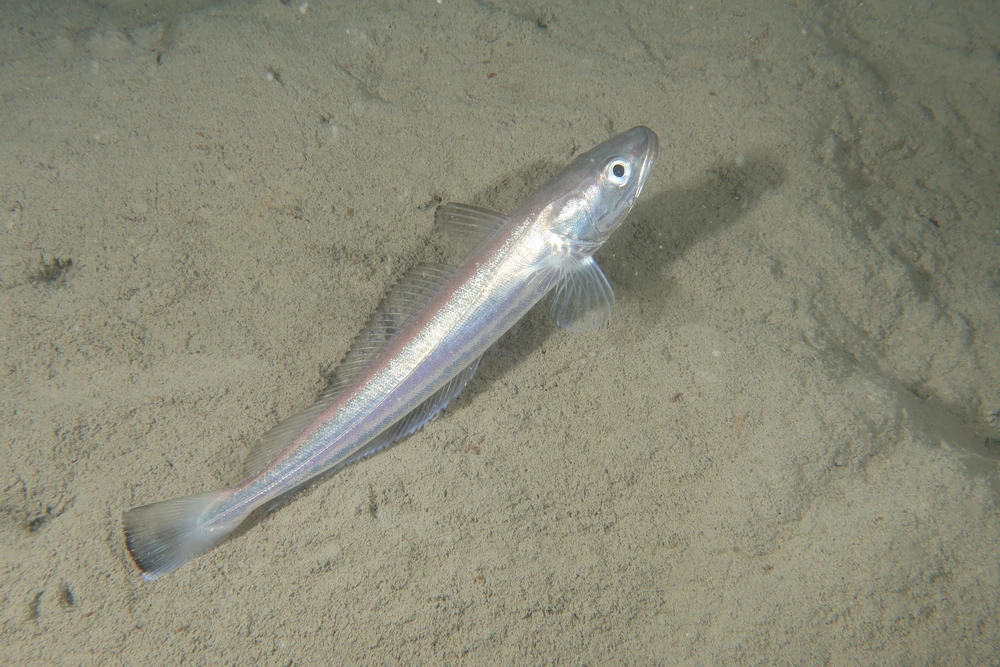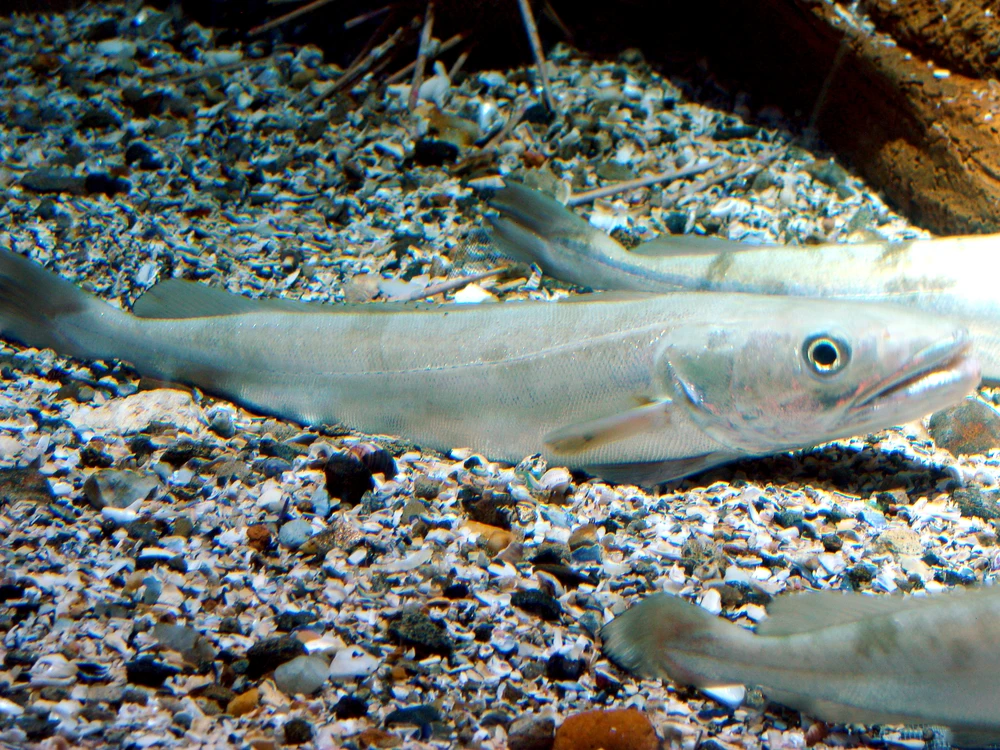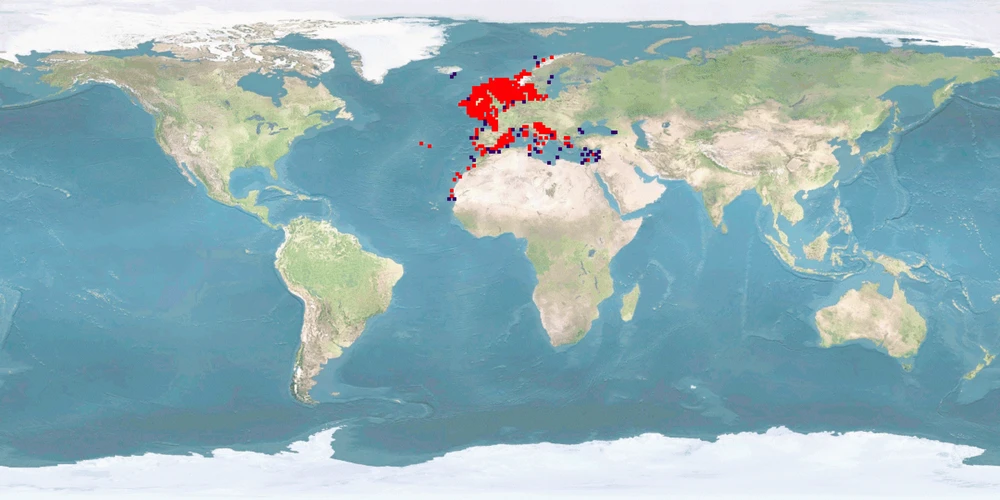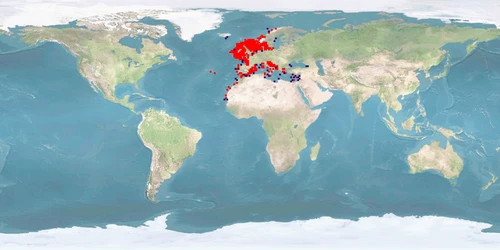Catching remarks
Merluccius merluccius is a demersal fish species that has been found in depths ranging from 30 to 1,075 m. It is heavily exploited in the northern Atlantic Ocean and is a target species in most Mediterranean fisheries for its high economic value. Although on a global level, the IUCN status is “least concern”, in the Mediterranean, it is considered an overfished species. Among all catching methods used to catch M. merluccius, set nets – more specifically gill nets – are the most frequently used in small-scale European fisheries.
The principle of gill nets is to have IND entangled for hours resulting in stress and injuries up to mortality, so there is no way to avoid this decrease in welfare except for shorter soaking times. This may be a solution to IND being scavenged by predators, too. Since catching of M. merluccius takes place in great depths, there is the risk of barotrauma and osmoregulatory distress. After hauling the net, IND are subjected to exposure to air, contact with the gear, experiencing their own weight, and handling (including dropping and throwing) through emersion, release from the gear, and sorting. For storing, they might already be dead which prevents prolonged suffering by asphyxia or hypothermia, but a stunning step is missing. Accidentally caught M. merluccius experience the same treatment until they are discarded after sorting. Avoiding bycatch may be managed through mesh size, although undersized IND may still be entangled by their teeth. Closure of fishing areas or seasons might be more successful.
For details see: WelfareCheck | catch (pre-release)
Related news
FishEthoGroup published another episode of the fair-fish database podcast programme of FishTalk. This time it's all about Merluccius merluccius, European hake. This WelfareCheck comes from the catch branch of our fair-fish database dealing with aquatic species and their welfare concerns in fisheries. In around 5 min, you will learn general bits of information on M. merluccius as well as issues associated with catching this species with set nets.
Please find this episode in the Merluccius merluccius species profile as well as over at FishEthoGroup.
Merluccius merluccius (European hake) is a highly sought-after species in the northern Atlantic and Mediterranean – especially by small-scale fisheries using gill nets. We did not find much concerning welfare of M. merluccius, so we had to fall back to assumptions and conclusions. If you know more, please contact us.
The low WelfareScore results from the principle of set nets to entangle species for hours which potentially results in stress and injuries up to mortality. In the case of M. merluccius, because it is hauled from large depths, barotrauma and osmoregulatory distress may ensue. Rough disentangling and sorting happen under exposure to air. And although individuals may be already dead for storing, a stunning step is missing which potentially means suffering during slaughter. Further research is needed – especially on ways how to improve the situation. Find the WelfareCheck | catch Merluccius merluccius x set nets here.








Probably, we updated the profile. Check the version number in the head of the page. For more information on the version, see the FAQ about this. Why do we update profiles? Not just do we want to include new research that has come out, but we are continuously developing the database itself. For example, we changed the structure of entries in criteria or we added explanations for scores in the WelfareCheck | farm. And we are always refining our scoring rules.
The centre of the Overview is an array of criteria covering basic features and behaviours of the species. Each of this information comes from our literature search on the species. If we researched a full Dossier on the species, probably all criteria in the Overview will be covered and thus filled. This was our way to go when we first set up the database.
Because Dossiers are time consuming to research, we switched to focusing on WelfareChecks. These are much shorter profiles covering just 10 criteria we deemed important when it comes to behaviour and welfare in aquaculture (and lately fisheries, too). Also, WelfareChecks contain the assessment of the welfare potential of a species which has become the main feature of the fair-fish database over time. Because WelfareChecks do not cover as many criteria as a Dossier, we don't have the information to fill all blanks in the Overview, as this information is "not investigated by us yet".
Our long-term goal is to go back to researching Dossiers for all species covered in the fair-fish database once we set up WelfareChecks for each of them. If you would like to support us financially with this, please get in touch at ffdb@fair-fish.net
See the question "What does "not investigated by us yet" mean?". In short, if we have not had a look in the literature - or in other words, if we have not investigated a criterion - we cannot know the data. If we have already checked the literature on a criterion and could not find anything, it is "no data found yet". You spotted a "no data found yet" where you know data exists? Get in touch with us at ffdb@fair-fish.net!
First up, you will find answers to questions for the specific page you are on. Scrolling down in the FAQ window, there are also answers to more general questions. Explore our website and the other sub pages and find there the answers to questions relevant for those pages.
In the fair-fish database, when you have chosen a species (either by searching in the search bar or in the species tree), the landing page is an Overview, introducing the most important information to know about the species that we have come across during our literatures search, including common names, images, distribution, habitat and growth characteristics, swimming aspects, reproduction, social behaviour but also handling details. To dive deeper, visit the Dossier where we collect all available ethological findings (and more) on the most important aspects during the life course, both biologically and concerning the habitat. In contrast to the Overview, we present the findings in more detail citing the scientific references.
Depending on whether the species is farmed or wild caught, you will be interested in different branches of the database.
Farm branch
Founded in 2013, the farm branch of the fair-fish database focuses on farmed aquatic species.
Catch branch
Founded in 2022, the catch branch of the fair-fish database focuses on wild-caught aquatic species.
The heart of the farm branch of the fair-fish database is the welfare assessment – or WelfareCheck | farm – resulting in the WelfareScore | farm for each species. The WelfareCheck | farm is a condensed assessment of the species' likelihood and potential for good welfare in aquaculture, based on welfare-related findings for 10 crucial criteria (home range, depth range, migration, reproduction, aggregation, aggression, substrate, stress, malformations, slaughter).
For those species with a Dossier, we conclude to-be-preferred farming conditions in the Advice | farm. They are not meant to be as detailed as a rearing manual but instead, challenge current farming standards and often take the form of what not to do.
In parallel to farm, the main element of the catch branch of the fair-fish database is the welfare assessment – or WelfareCheck | catch – with the WelfareScore | catch for each species caught with a specific catching method. The WelfareCheck | catch, too, is a condensed assessment of the species' likelihood and potential for good welfare – or better yet avoidance of decrease of good welfare – this time in fisheries. We base this on findings on welfare hazards in 10 steps along the catching process (prospection, setting, catching, emersion, release from gear, bycatch avoidance, sorting, discarding, storing, slaughter).
In contrast to the farm profiles, in the catch branch we assess the welfare separately for each method that the focus species is caught with. In the case of a species exclusively caught with one method, there will be one WelfareCheck, whereas in other species, there will be as many WelfareChecks as there are methods to catch the species with.
Summarising our findings of all WelfareChecks | catch for one species in Advice | catch, we conclude which catching method is the least welfare threatening for this species and which changes to the gear or the catching process will potentially result in improvements of welfare.
Welfare of aquatic species is at the heart of the fair-fish database. In our definition of welfare, we follow Broom (1986): “The welfare of an individual is its state as regards its attempts to cope with its environment.” Thus, welfare may be perceived as a continuum on which an individual rates “good” or “poor” or everything in between.
We pursue what could be called a combination of not only a) valuing the freedom from injuries and stress (function-based approach) but b) supporting attempts to provide rewarding experiences and cognitive challenges (feelings-based approach) as well as c) arguing for enclosures that mimic the wild habitat as best as possible and allow for natural behaviour (nature-based approach).
Try mousing over the element you are interested in - oftentimes you will find explanations this way. If not, there will be FAQ on many of the sub-pages with answers to questions that apply to the respective sub-page. If your question is not among those, contact us at ffdb@fair-fish.net.
It's right here! We decided to re-name it to fair-fish database for several reasons. The database has grown beyond dealing purely with ethology, more towards welfare in general – and so much more. Also, the partners fair-fish and FishEthoGroup decided to re-organise their partnership. While maintaining our friendship, we also desire for greater independence. So, the name "fair-fish database" establishes it as a fair-fish endeavour.


